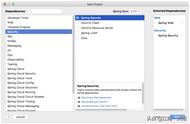我将在此处描述的问题和解决方案是“基本Http身份验证”的基本对话框的解决方法。尝试统一身份验证流程时遇到了这样的问题。像我们大多数人一样,我从浏览互联网开始寻找解决方案,不幸的是,我发现没有一种解决方案适合我的情况。在这里,我想分享我的经验,希望有人会觉得有用。

通常,一个问题是取消基本的http身份验证对话框并显示自定义UI而不是“基本浏览器”对话框,只是为了使跨浏览器具有通用的用户体验。例如,在Chrome,FF或Opera浏览器上输入错误的用户凭据时的用户体验将不同于InternetExplorer和Safari.IE或Safari在几次尝试在服务器上对用户进行身份验证后将取消错误请求(如果是错误的),并且Web应用程序可以显示某些页面,例如“无法访问您的帐户”。Chrome,FF和Opera将无限执行此操作(请求将处于待处理状态),直到用户放弃并按“取消”按钮。另一个问题是在进行基本身份验证的情况下如何注销。
我的实验是围绕Apache服务器的配置进行的,但我认为可以轻松地针对IIS或Nginx进行配置。因为那时一切都围绕基本Http身份验证。
该解决方案通过了IE(10,11),Chrome49,FF44,Opera36的测试。
解决方案首先,必须要做的是配置Http服务器,在我的例子中是Apache。通常,不需要身份验证的所有静态内容(例如图像,脚本,html)都不需要身份验证。但是对于该解决方案,我们将需要一个经过身份验证的图像(例如)。
我在服务器上创建了一个目录,并在其中放置了小映像并配置了apache,以便需要对资源进行身份验证。
这是名称为“”的目录的配置示例auth_required
Alias /auth_required /path/auth_required/
<Location /auth_required>
Options Indexes
Order allow,deny
Allow from all
Include "/your/path/here/an_auth_config.conf"
</Location>1234567复制代码类型:[javascript]
我为自定义身份验证UI创建了一个免费的身份验证目录。该目录具有一个简单的HTML页面,该页面无法破坏整个门户网站的安全性,并显示简单的身份验证页面。
这是目录身份验证的Apache配置示例。
# Unprotected resources
<Directory /path/auth>
AuthType None
</Directory>
Alias /auth /path/auth
<Location /auth>
# No Auth
AuthType None
#Require all granted
DirectoryIndex auth_test.html
</Location>123456789101112复制代码类型:[javascript]
这就是我们在服务器端要做的所有事情。
主要技巧是在客户端实现的。
在下面,您将找到带有内联注释的代码示例。该解决方案适用于InternetExplorer,Chrome,FF和Opera,但不幸的是不适用于Safari。
我想如果服务器将在用户凭据错误的情况下提供403代码而不是401代码,那么Safari也可以正常工作。目前,我还没有找到适合Safari的正确方法。
此外,我还有一个开放的问题,即在用户成功通过身份验证时,客户端应在哪里保留用户名,如果下次用户自动将其重定向到主页而不提示身份验证页,客户端应该这样做。现在,我将用户名保留在cookie上,如果不为空,它将触发自动重定向到主页,而无需直接在url上提供用户名和密码。
function doLoad()
{
//the method will be called on page load and in case
//if user previously was authenticated should redirect to main page
//here we have to get logged in user somehow, probably from cookie or local storage.
//we always have to provide user name to XMLHttpRequest even if it is not correct,
//because in case if user was not logged in before
//and we do not provide any user name for XMLHttpRequest.open method
//default authentication window will be prompted, but we want to suppress it
var user = $.cookie('loggedas');
if (user && user.length > 0)
{
authenticate();
}
}
function doAuthenticate()
{
//the method have to be called on user click on user credentials form
var user = $('#useridUIID').val();
var pswd = $('#pswdUIID').val();
//it is main trick, default authenticated window will be
//prompted until ANY user name (even not correct) will be passed to XMLHttpRequest
//but it doesn't work for Safari
user = (user && user.length > 0 ? user : '' Date.now().getTime())
authenticate(user, pswd);
}
function authenticate(user, pswd)
{
var warning = $('div.warning');
if (!warning.hasClass('hidden'))
{
warning.addClass('hidden');
}
//path to resource which require authentication
var img = location.protocol '//' location.host
(location.port && location.port.length > 0 ? ':'
location.port : '') '/auth_required/favicon.ico';
var xhr = new XMLHttpRequest();
if (user)
{
xhr.open('GET', img, true, user, pswd);
}
else
{
xhr.open('GET', img, true);
}
xhr.onreadystatechange = function (e)
{
if (this.status !== 0) //work around for IE
{
if (this.status === 200)
{
//keep user name, in order to redirect automatically next time
//from my perspective I dont see any security breach to keep user name at cookies,
//if it is not so, here should be another way to automatically redirecting next time
$.cookie('loggedas', user);
//redirect to main page
if (user)
{
try
{
document.location.href = location.protocol '//'
user ':' pswd '@' location.host
(location.port && location.port.length > 0 ? ':'
location.port : '') '/admin/';
}
catch (e)
{
document.location.href = location.protocol '//'
location.host (location.port && location.port.length > 0 ?
':' location.port : '') '/admin/';
}
}
else
{
document.location.href = location.protocol '//' location.host
(location.port && location.port.length > 0 ? ':'
location.port : '') '/admin/';
}
}
else
{
//show error in case wrong credentials
if (warning.hasClass('hidden'))
{
warning.removeClass('hidden');
}
}
}
};
xhr.send();
}
$(document).ready(function ()
{
doLoad();
});123456789101112131415161718192021222324252627282930313233343536373839404142434445464748495051525354555657585960616263646566676869707172737475767778798081828384858687888990919293949596979899100101102103104105106107108复制代码类型:[javascript]
现在,您可以像这样对服务器进行身份验证:

代替默认值:

当然,如果您不想在服务器端实现自定义身份验证,而只使用基本身份验证,那么我所说的一切都会起作用。
另外,我仍然不知道Safari合适的解决方法。而且我没有针对较旧的浏览器进行测试,该解决方案是否适用于它们?
,














